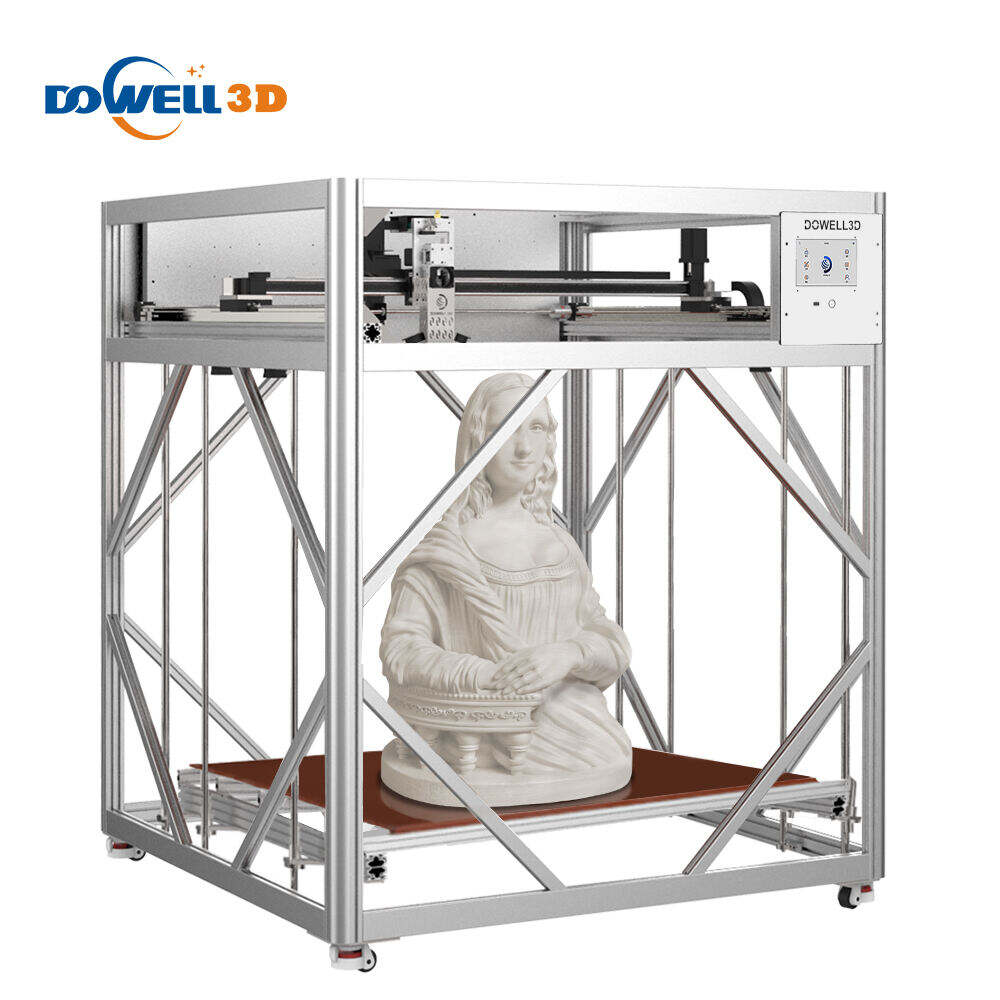inside the Dowell 3D lab, researchers have been busy researching exciting new opportunities in manufacturing 3D printing. They are experimenting with combining different materials to make new and wonderful things. Here is a closer look at what they are finding.
Unlocking the opportunity of multi-material combinations in industrial 3D printing:
One of the coolest things about industrial 3D printing is being able to employ more than one material on an object. This paves way to an exciting new set of opportunities for making things that couldn’t have been made before. Combine materials like plastic and metal, and engineers can make things like light (inhale) and strong (exhale). Such plasticity could break new ground in industries such as aerospace, where materials must be both strong and light.
Harnessing multi-material flexibility for complex part designs:
Another and even more profound example of how multi-material capability is turning the game on its head in industrial 3D printing is in the ability to produce incredibly complex design. By using different materials in different places on an object, engineers can produce very complex shapes and structures that would be impossible to make using traditional manufacturing. That sort of flexibility is creating new opportunities for designers and engineers who are interested in taking things further than anyone had previously thought possible.
Pushing limits of AM with new materials:
Beyond mixing materials, Dowell 3D scientists are tinkering with “advanced materials” that can, say, change shape or color when they encounter certain conditions. They are called smart materials, and have the potential to change everything we thought we knew about making things. Picture a car that can morph into a more aerodynamic shape or a building that can change the direction of its shadows to control its own temperature. These are just a few of the opportunities advanced materials are unlocking in the world of additive manufacturing.
Meanwhile another priority is the optimization of production processes by using new multisubstance approaches:
One of the biggest benefits of using multi-material capabilities in 3D printing for industrial applications is to streamline production processes. By combining materials with differing properties, engineers can design stronger, lighter, more efficient objects. This can result in savings and reduce both time-to-market and waste. For instance, by ipping between materials that flex and those that don’t, engineers can fabricate objects that are both rugged and elastic, so they’re less likely to snap when stressed.
Industrial 3D printing ventures into new territory with a range of materials:
As Dowell 3d team of scientists press the limits of industrial 3D printing, they always look to other material alternatives. From biodegradable plastics to conducting metals, the list is endless. With their ongoing work to test different materials, they are forging ahead and breaking barriers in the industrial 3D printing space that never seemed possible before. The future of manufacturing is coming out of Dowell 3D-shop now.
Table of Contents
- Unlocking the opportunity of multi-material combinations in industrial 3D printing:
- Harnessing multi-material flexibility for complex part designs:
- Pushing limits of AM with new materials:
- Meanwhile another priority is the optimization of production processes by using new multisubstance approaches:
- Industrial 3D printing ventures into new territory with a range of materials:

 EN
EN
 AR
AR
 BG
BG
 HR
HR
 DA
DA
 NL
NL
 FR
FR
 DE
DE
 EL
EL
 HI
HI
 IT
IT
 JA
JA
 KO
KO
 PT
PT
 RU
RU
 ES
ES
 SV
SV
 TL
TL
 ID
ID
 SR
SR
 SK
SK
 UK
UK
 VI
VI
 ET
ET
 HU
HU
 TH
TH
 TR
TR
 MS
MS
 GA
GA
 BE
BE
 HY
HY
 KA
KA
 LO
LO
 LA
LA
 MN
MN
 NE
NE
 SO
SO
 MY
MY
 KK
KK
 UZ
UZ
